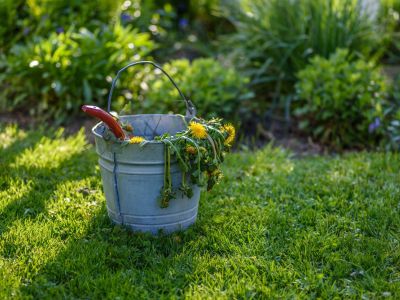What is Weed Tea?
Weed fertilizer tea is exactly what it sounds like: an infusion of weeds you can use to fertilize the garden. Gardeners often pull up weeds and throw them away. The viable seeds can’t go in compost, so all the nutrients they’ve gathered from the soil go to waste. A better solution is to make a tea of the weeds. The resulting liquid has no seeds in it, but you still get all the phosphorus, potassium, nitrogen, magnesium, sulfur, copper, boron, and other minerals and nutrients they have stored in their roots and leaves.
How to Make Weed Tea
Making weed tea is one of the easier things you’ll do in the garden. Simply add weeds and water to a large bucket, cover, and let it sit for about four weeks, stirring weekly. Use about 8 cups of water per pound of weeds. After the tea is made, use a sieve or cheesecloth to strain out the plant material. That will catch the seeds, which you can throw out, and leave you with a rich, nutrient-filled liquid fertilizer. Any weed can go into the tea, but for extra caution avoid things that are toxic or cause reactions like poison ivy or poison oak, especially for use on vegetables. Dandelions work well, as they store a lot of nutrients in their roots. Keep in mind that your weed tea will smell strong and to some people unpleasant. Take care to avoid getting it on your hands or clothing, as it will stain.
Using Weed Tea to Fertilize
Once you have a batch of weed tea ready, dilute to about one part of tea to ten parts water. Use this mixture as a direct fertilizer simply by adding it to the soil at the base of each plant. Any plant, including vegetables, can benefit from this. You can also use this as a foliar fertilizer. Dilute it until it is the color of weak tea and use a spray bottle to cover leaves of the plants you want to fertilize. Avoid spraying the tea on vegetable plants if they are close to being harvested. Try to use the tea as soon as possible. Don’t let it sit around until next year. Use your weed tea fertilizer no more than once every two weeks or so. New transplants, blooming plants, and those setting fruit will especially benefit from the nutrient boost.
